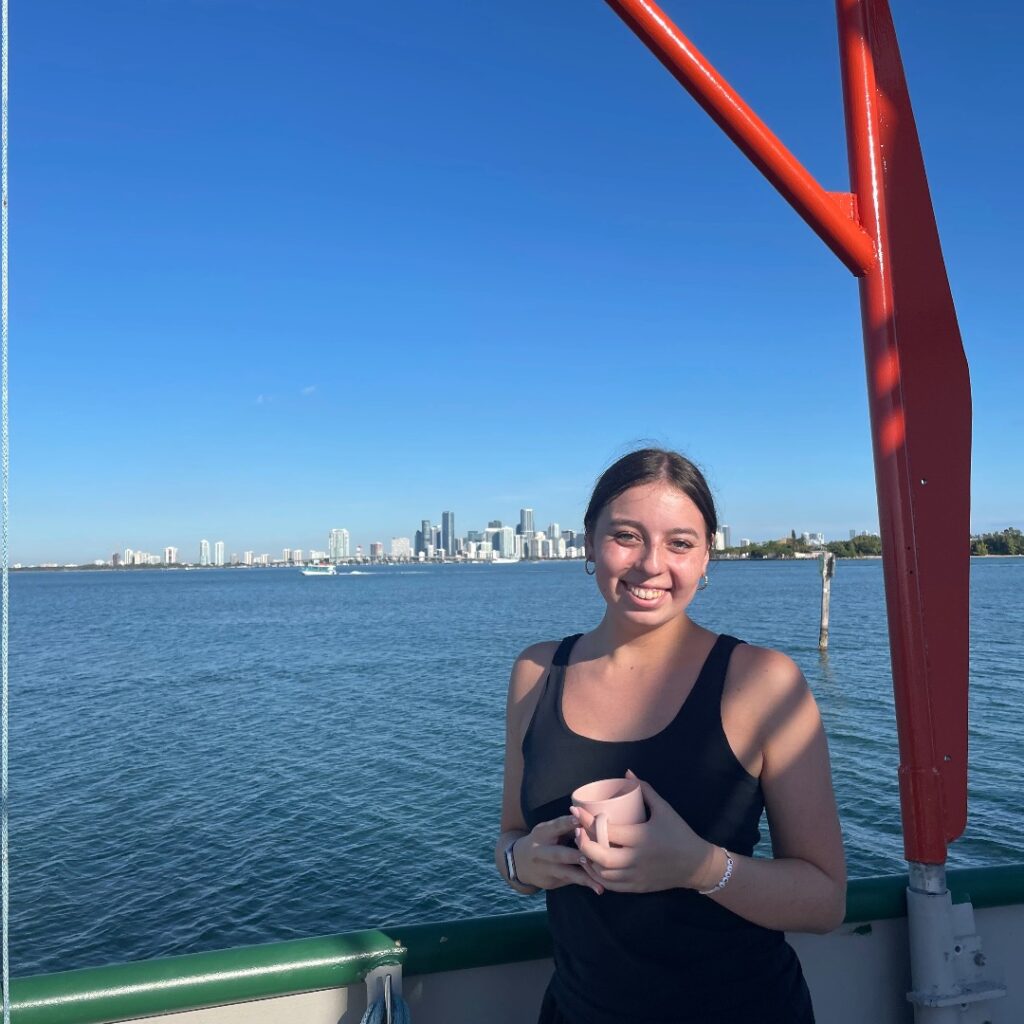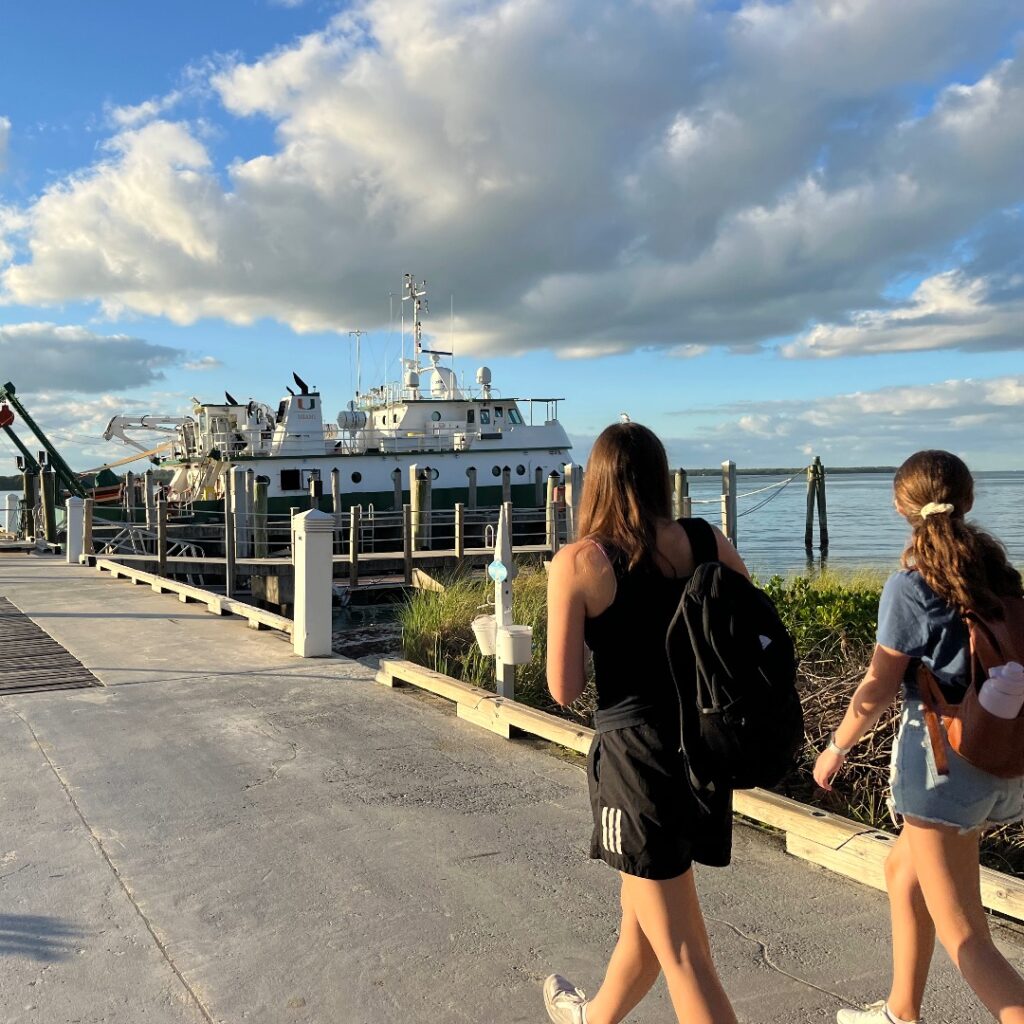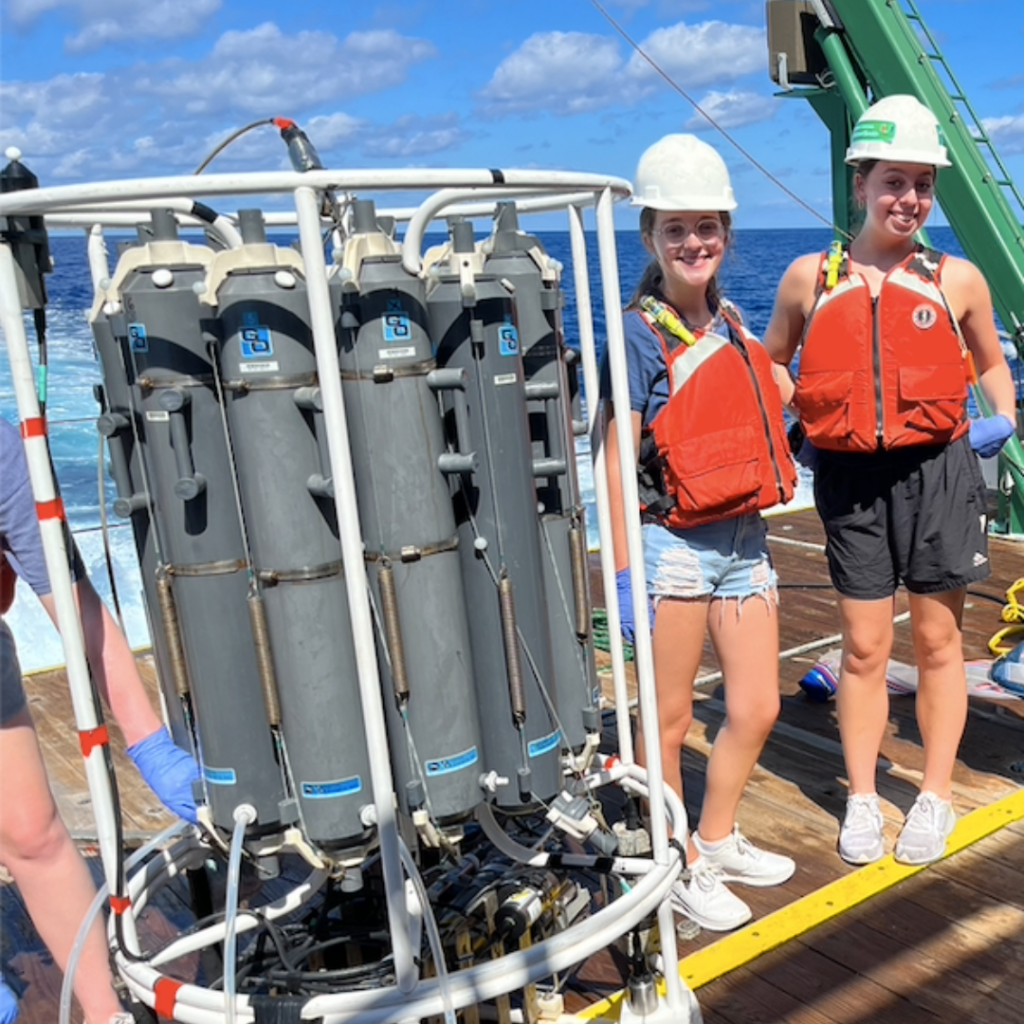Mary Reed, an undergraduate student at the University of Miami Rosenstiel School of Marine and Atmospheric Science, was awarded the Chuck Skoch Scholarship in 2022.

Mary Reed onboard the Walton Smith catamaran. Image courtesy of Mary Reed.
As a life-long boater and coastal dweller, I was ecstatic to find out my school was the owner of a 96 ft. research vessel docked right next to our Key Biscayne campus. The catamaran, the Walton Smith, is fully equipped with an onboard laboratory, a fleet of smaller vessels, and a plethora of instruments that can measure any oceanic or atmospheric parameter you can think of. While I was truly in awe, I figured this vessel was primarily reserved for graduate students or professors whose research requires long ocean passages.
As a freshman at the University of Miami, I was excited to partake in research but did not know what my involvement would look like so early in my undergraduate career. It was quickly made clear that the University of Miami prioritizes research and student involvement from the second you arrive on campus. My emails were flooded with sign-ups for snorkeling trips, how to get involved in labs, and of course, how to attend a day cruise on the infamous research vessel.
Between longer passages, the Walton Smith conducts day trips into the Florida Straits, located right off the coast of Miami. On these cruises, research faculty collect field samples and data to bring back to professors, grad students, and PhD students at the school. Undergraduate students are also able to attend these cruises as observers and helpers.
Immediately I put my name down on the list and was selected for a cruise in my fall semester. Sadly, the trip was canceled due to rough seas, but rescheduled for February. When the day finally came, I took my sea-sickness medication as recommended by upperclassmen, grabbed my belongings, and took my first steps onto the boat.

Students engage in research and the collection of oceanic and atmospheric data aboard the Walton Smith. Image courtesy of Mary Reed.
We were first greeted by the crew and chief scientists of the cruise, and given an initial tour of the vessel. Beginning on the aft deck, we walked inside through the onboard laboratory, then into the galley. To my surprise, there was breakfast prepared for everyone aboard the cruise, and I enjoyed a cup of coffee up on the bow of the boat. The day began quite calmly, just exploring the ship and taking in the view of Miami as it got further and further away from us. The combination of a 10 knot cruising speed, 1 to 2 feet waves, and plenty of Dramamine made for a pleasant ride.
The science began soon after, with a professor from the Physical Oceanography department giving us a presentation on exactly where we would be going on the cruise. He showed us detailed figures and maps of the Florida straits, illustrating the ocean circulation patterns, bathymetric topography, and sea temperatures as we got further from shore. We also began to learn about the instrumentation aboard the vessel, including depth sounder transducers to measure ocean currents and advanced navigation equipment at the helm.
Cruising into shore was truly breathtaking. The combination of the sunset, cityscape, and a visit from some dolphins made for the perfect end to our day at sea.
Mary Reed
Next, we spoke with graduate students with many diverse backgrounds and perspectives. One student showed us samples she had collected of various deep-sea benthic organisms, including one she discovered herself. Another student shared her journey of pursuing an MS/JD joint degree, with hopes of working in the policy side of the aquaculture industry. These students offered great advice and were a fantastic reminder of the many career opportunities in the marine science field.

Mary Reed (right) and a student (left) are pictured next to the CTD device. Image courtesy of Mary Reed.
After a quick lunch, we got suited up in life jackets and hard hats to work hands-on with the CTD team. CTD stands for conductivity, temperature, and depth. The instrument is incorporated into a group of 12 Niskin bottles, which all release at different depths to collect water samples. As each bottle was deployed, live data regarding the salinity, temperature, and chlorophyll content of the water was delivered to an onboard computer.
Next we performed a plankton tow behind the vessel using a bongo-style net. We were able to do this fairly close to the surface, as phytoplankton must live in the sunlight zone to photosynthesize, and their zooplankton predators live there to feed. Upon dragging these nets, we were able to view squid and lobster larvae, as well as various copepods under the microscope.
Using water from the CTD samples, we later performed an auto titration to determine the presence of ions in the water to measure conductivity. This demonstrated an alternate method of determining salinity. We also assisted with a standard titration to determine the amount dissolved oxygen in the water samples.
As we wrapped up the activities for the day, we slowly began to see land once again. Cruising into shore was truly breathtaking. The combination of the sunset, cityscape, and a visit from some dolphins made for the perfect end to our day at sea. Now as I begin my sophomore year, I hope to attend another Walton Smith cruise in the near future. I am thankful that the Skotch family’s generous donation has allowed me to attend a school with so many opportunities for hands-on learning. I plan to continue getting involved in these activities and pursue some of my own research projects in the lab this semester!